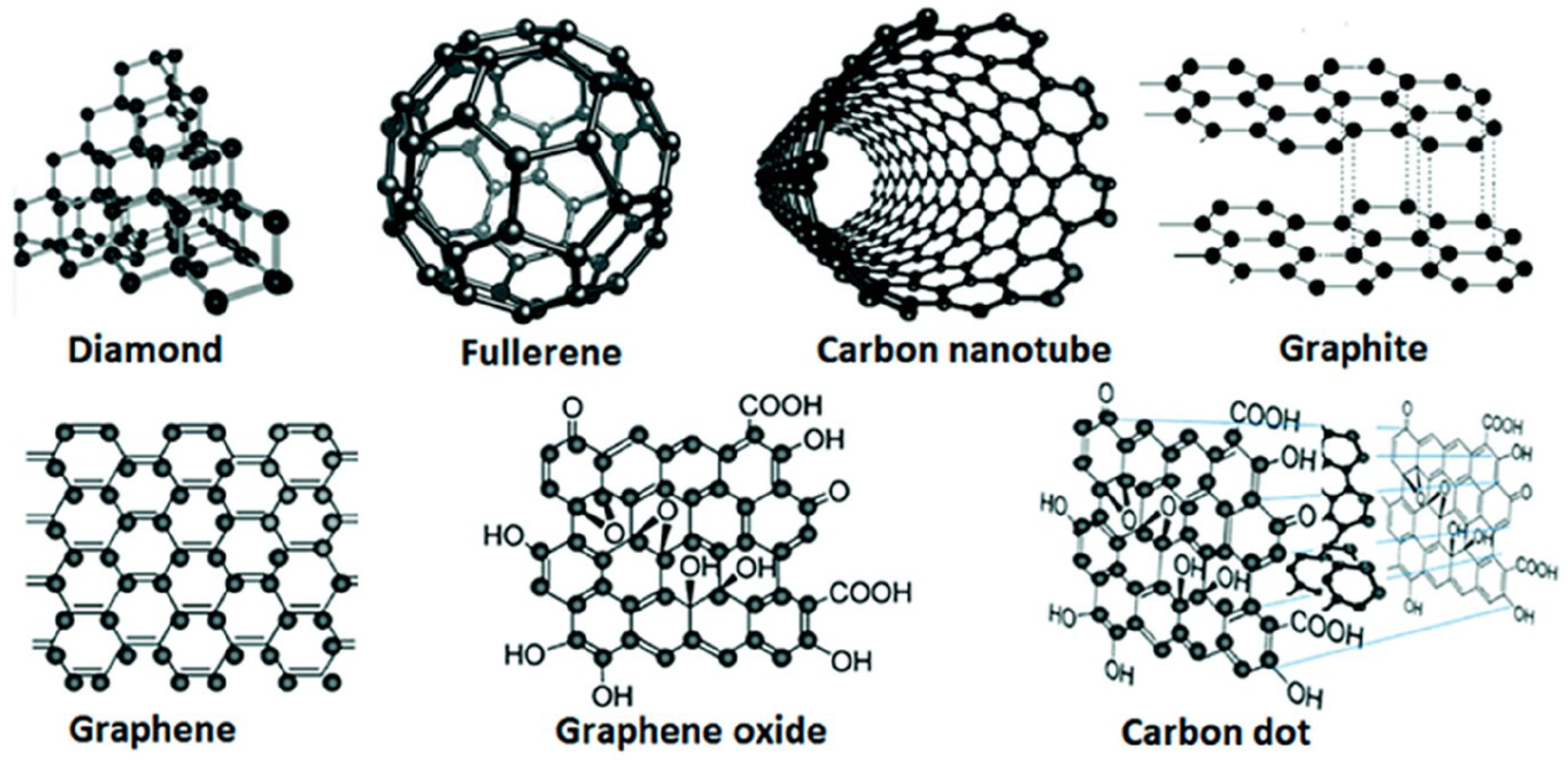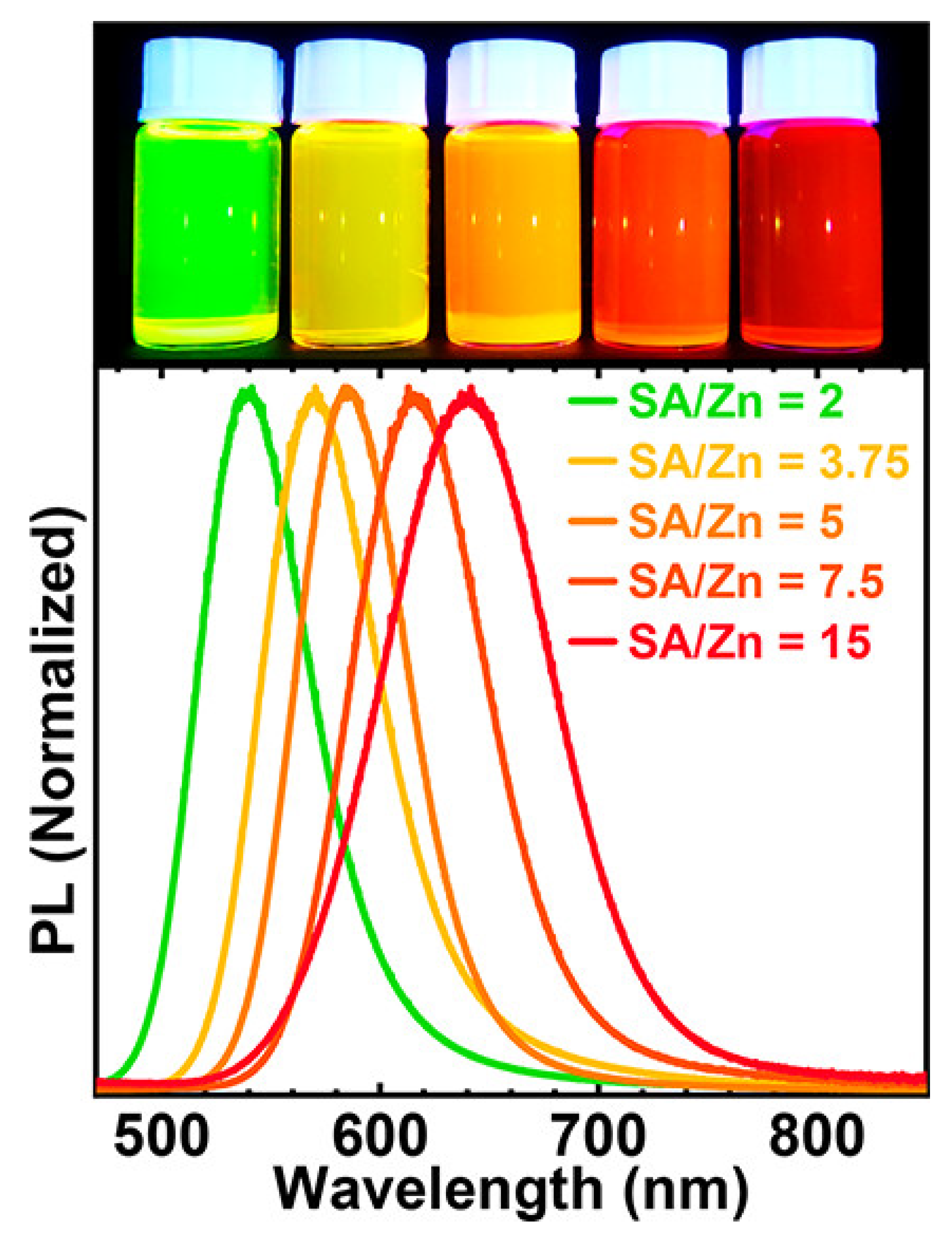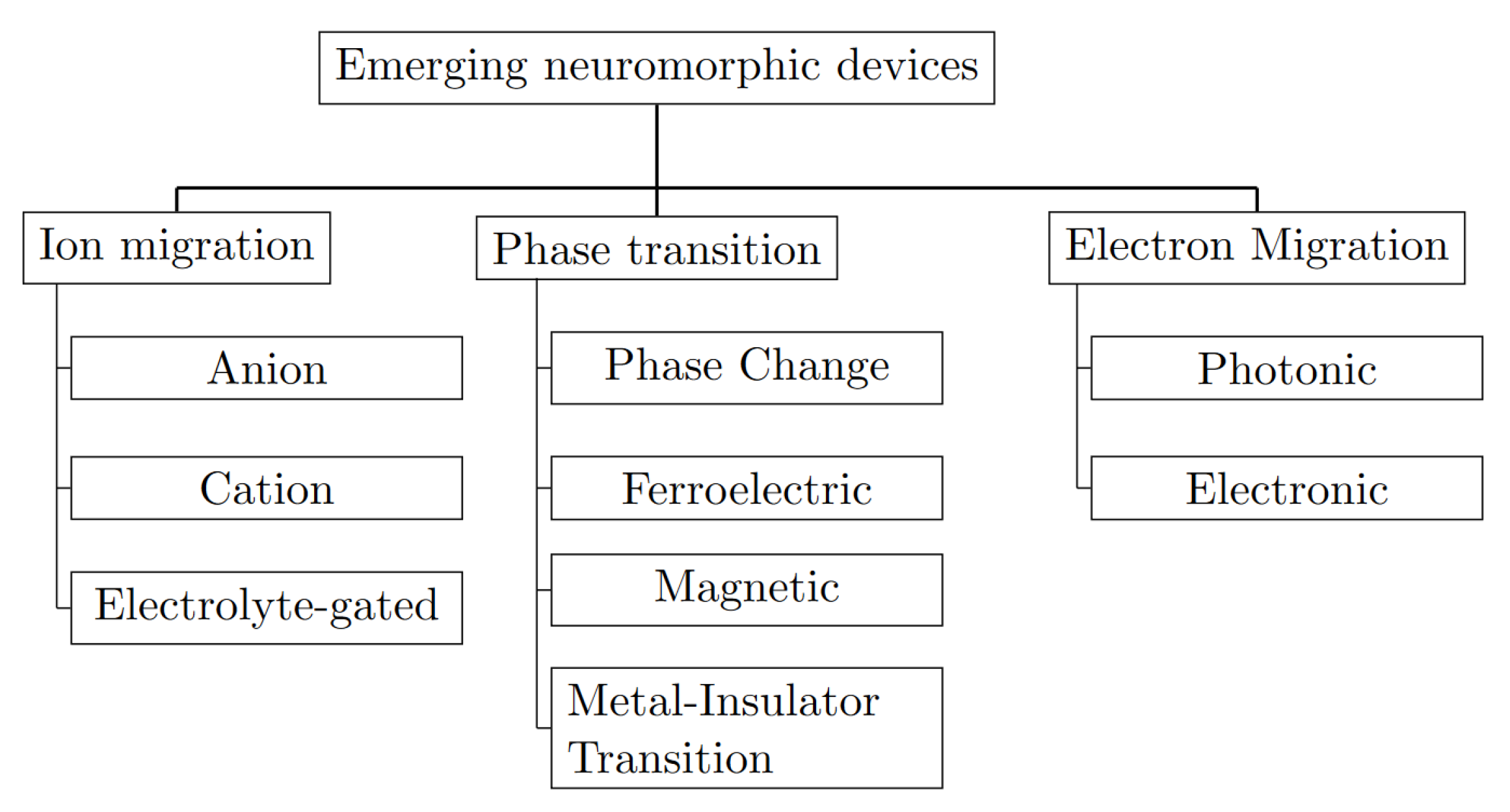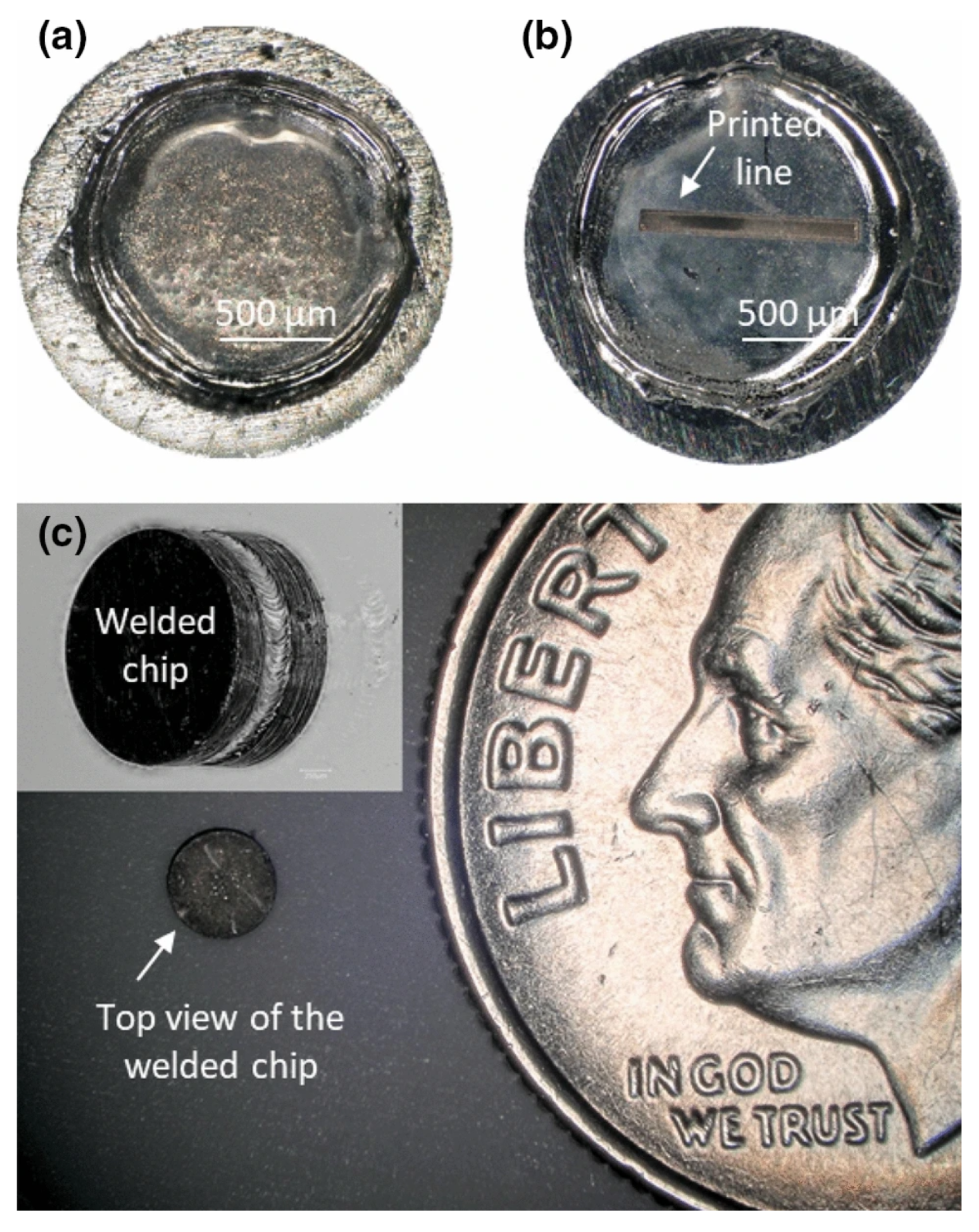An Overview of Emerging Nuclear Sensor Technologies: Challenges, Advancements and Applications
Abstract
1. Introduction
2. Emerging Nuclear Sensor Technology
2.1. Graphene-Based Nuclear Sensors
2.2. Quantum Dot-Based Nuclear Sensors
2.3. Neuromorphic Nuclear Sensors
2.4. Solid-State Nuclear Sensors
3. Applications of Nuclear Sensors
3.1. Nuclear Power Plant Safety
3.2. Medical Imaging
3.3. Environmental Monitoring
4. Challenges and Future Directions
4.1. Fabrication Costs
4.2. Sensor Size
4.3. Sensor Sensitivity
4.4. Advanced Manufacturing and Integration Techniques
5. Conclusions
Author Contributions
Funding
Data Availability Statement
Acknowledgments
Conflicts of Interest
References
- Shubayr, N. Nuclear security measures: A review of selected emerging technologies and strategies. J. Radiat. Res. Appl. Sci. 2024, 17, 100814. [Google Scholar] [CrossRef]
- Mondal, K.; Fujimoto, K.; McMurtrey, M.D. Advanced Manufacturing of Printed Melt Wire Chips for Cheap, Compact Passive In-Pile Temperature Sensors. JOM 2020, 72, 4196–4201. [Google Scholar] [CrossRef]
- McMurtrey, M.; Mondal, K.; Fujimoto, K.; Bass, J.; Biaggne, A. Report on Plasma Jet Printer for Sensor Fabrication with Process Parameters Optimized by Simulation Input; U.S. Department of Energy Office of Nuclear Energy: Washington, DC, USA, 2019. [CrossRef]
- Wilding, M.; Mondal, K.; Lloyd, R.; Fujimoto, K.; McMurtrey, M.; Unruh, T. Initial Temperature Testing of Advanced Manufactured Melt Wire Package; U.S. Department of Energy National Laboratory: Pittsburgh, PA, USA, 2020. [CrossRef]
- Daw, J.; Unruh, T.C.; Heidrich, B.J.; Hurley, D.H.; Fujimoto, K.T.; Estrada, D.; McMurtrey, M.; Mondal, K.; Hone, L.; Seifert, R.D.; et al. Sensors for Passively Measuring a Maximum Temperature of a Nuclear Reactor, and Related Methods. U.S. Patent 11,923,097, 5 March 2024. [Google Scholar]
- Kim, K.C.; Kwon, H.K.; Park, J.S.; Seong, U.H. Evaluation of Dynamic J-R Curve for Leak Before Break Design of Nuclear Reactor Coolant Piping System; IntechOpen: London, UK, 2011. [Google Scholar]
- Michail, C.; Liaparinos, P.; Kalyvas, N.; Kandarakis, I.; Fountos, G.; Valais, I. Radiation Detectors and Sensors in Medical Imaging. Sensors 2024, 24, 6251. [Google Scholar] [CrossRef] [PubMed]
- Khizar, S.; Zine, N.; Jaffrezic-Renault, N.; Elaissari, A.; Errachid, A. Prospective analytical role of sensors for environmental screening and monitoring. TrAC Trends Anal. Chem. 2022, 157, 116751. [Google Scholar] [CrossRef]
- Bolotin, K.I.; Sikes, K.; Jiang, Z.; Klima, M.; Fudenberg, G.; Hone, J.; Kim, P.; Stormer, H.L. Ultrahigh electron mobility in suspended graphene. Solid State Commun. 2008, 146, 351–355. [Google Scholar] [CrossRef]
- Mir, S.H.; Yadav, V.K.; Singh, J.K. Recent Advances in the Carrier Mobility of Two-Dimensional Materials: A Theoretical Perspective. ACS Omega 2020, 5, 14203–14211. [Google Scholar] [CrossRef]
- Urade, A.R.; Lahiri, I.; Suresh, K.S. Graphene properties, synthesis and applications: A review. JOM 2023, 75, 614–630. [Google Scholar] [CrossRef]
- Fuad, M.H.; Nayan, M.F.; Raihan, M.A.; Yeassin, R.; Mahmud, R.R. Performance analysis of graphene field effect transistor at nanoscale regime. e-Prime—Adv. Electr. Eng. Electron. Energy 2024, 9, 100679. [Google Scholar] [CrossRef]
- Yan, Q.L.; Gozin, M.; Zhao, F.Q.; Cohen, A.; Pang, S.P. Highly energetic compositions based on functionalized carbon nanomaterials. Nanoscale 2016, 8, 4799–4851. [Google Scholar] [CrossRef]
- Warda, M.; Badih, K. Graphene Field Effect Transistors: A Review. arXiv 2021, arXiv:2010.10382v2. [Google Scholar]
- Jovanovic, I.; Koybasi, O.; Cazalas, E.; Childres, I.; Chen, Y. Performance and Design Optimization of Graphene Field-Effect Transistors for Radiation Detection. Trans. Am. Nucl. Soc. 2013, 108, 259–260. [Google Scholar]
- Balandin, A.A.; Ghosh, S.; Bao, W.; Calizo, I.; Teweldebrhan, D.; Miao, F.; Lau, C.N. Superior thermal conductivity of single-layer graphene. Nano Lett. 2008, 8, 902–907. [Google Scholar] [CrossRef] [PubMed]
- Memarian, F.; Fereidoon, A.; Darvish Ganji, M. Graphene Young’s modulus: Molecular mechanics and DFT treatments. Superlattices Microstruct. 2015, 85, 348–356. [Google Scholar] [CrossRef]
- Sun, L.; Yuan, G.; Gao, L.; Yang, J.; Chhowalla, M.; Gharahcheshmeh, M.H.; Gleason, K.K.; Choi, Y.S.; Hong, B.H.; Liu, Z. Chemical vapour deposition. Nat. Rev. Methods Prim. 2021, 1, 5. [Google Scholar] [CrossRef]
- Saeed, M.; Alshammari, Y.; Majeed, S.A.; Al-Nasrallah, E. Chemical vapour deposition of graphene-synthesis, characterisation, and applications: A review. Molecules 2020, 25, 3856. [Google Scholar] [CrossRef]
- Pham, P.V.; Mai, T.H.; Dash, S.P.; Biju, V.; Chueh, Y.L.; Jariwala, D.; Tung, V. Transfer of 2D Films: From Imperfection to Perfection. ACS Nano 2024, 18, 14841–14876. [Google Scholar] [CrossRef]
- Liu, N.; Pan, Z.; Fu, L.; Zhang, C.; Dai, B.; Liu, Z. The origin of wrinkles on transferred graphene. Nano Res. 2011, 4, 996–1004. [Google Scholar] [CrossRef]
- Suzuki, S.; Orofeo, C.M.; Wang, S.; Maeda, F.; Takamura, M.; Hibino, H. Structural instability of transferred graphene grown by chemical vapor deposition against heating. J. Phys. Chem. C 2013, 117, 22123–22130. [Google Scholar] [CrossRef]
- Li, X.; Zhu, Y.; Cai, W.; Borysiak, M.; Han, B.; Chen, D.; Piner, R.D.; Colombo, L.; Ruoff, R.S. Transfer of large-area graphene films for high-performance transparent conductive electrodes. Nano Lett. 2009, 9, 4359–4363. [Google Scholar] [CrossRef]
- Suk, J.W.; Lee, W.H.; Lee, J.; Chou, H.; Piner, R.D.; Hao, Y.; Akinwande, D.; Ruoff, R.S. Enhancement of the electrical properties of graphene grown by chemical vapor deposition via controlling the effects of polymer residue. Nano Lett. 2013, 13, 1462–1467. [Google Scholar] [CrossRef]
- Li, N.; Zhen, Z.; Zhang, R.; Xu, Z.; Zheng, Z.; He, L. Nucleation and growth dynamics of graphene grown by radio frequency plasma-enhanced chemical vapor deposition. Sci. Rep. 2021, 11, 6007. [Google Scholar] [CrossRef] [PubMed]
- Yazdi, G.R.; Iakimov, T.; Yakimova, R. Epitaxial Graphene on SiC: A Review of Growth and Characterization. Crystals 2016, 6, 53. [Google Scholar] [CrossRef]
- Jia, Y.; Sun, X.; Shi, Z.; Jiang, K.; Wu, T.; Liang, H.; Cui, X.; Lü, W.; Li, D. Improved performance of SiC radiation detectors due to optimized ohmic contact electrode by graphene insertion. Diam. Relat. Mater. 2021, 115, 108355. [Google Scholar] [CrossRef]
- Torimoto, T.; Kameyama, T.; Uematsu, T.; Kuwabata, S. Controlling optical properties and electronic energy structure of I–III–VI semiconductor quantum dots for improving their photofunctions. J. Photochem. Photobiol. C Photochem. Rev. 2023, 54, 100569. [Google Scholar] [CrossRef]
- Leong, K.H.; Chin, Y.H.; Sim, L.C.; Tan, B.; Dai, C.; Saravanan, P. Physical properties of quantum dots. In Graphene, Nanotubes and Quantum Dots-Based Nanotechnology; Elsevier: Amsterdam, The Netherlands, 2022; pp. 687–709. [Google Scholar] [CrossRef]
- Sanmartín-Matalobos, J.; Bermejo-Barrera, P.; Aboal-Somoza, M.; Fondo, M.; García-Deibe, A.M.; Corredoira-Vázquez, J.; Alves-Iglesias, Y. Semiconductor Quantum Dots as target analytes: Properties, surface chemistry and detection. Nanomaterials 2022, 12, 2501. [Google Scholar] [CrossRef]
- Williams, R.T.; Wolszczak, W.W.; Yan, X.; Carroll, D.L. Perovskite Quantum-Dot-in-Host for Detection of Ionizing Radiation. ACS Nano 2020, 14, 5161–5169. [Google Scholar] [CrossRef]
- Mangnus, M.J.J.; de Wit, J.W.; Vonk, S.J.W.; Geuchies, J.J.; Albrecht, W.; Bals, S.; Houtepen, A.J.; Rabouw, F.T. High-Throughput Characterization of Single-Quantum-Dot Emission Spectra and Spectral Diffusion by Multiparticle Spectroscopy. ACS Photonics 2023, 10, 2688–2698. [Google Scholar] [CrossRef]
- Brus, L.E. Electron–electron and electron-hole interactions in small semiconductor crystallites: The size dependence of the lowest excited electronic state. J. Chem. Phys. 1984, 80, 4403–4409. [Google Scholar] [CrossRef]
- Darwan, D.; Lim, L.J.; Wang, T.; Wijaya, H.; Tan, Z.K. Ultra-Confined Visible-Light-Emitting Colloidal Indium Arsenide Quantum Dots. Nano Lett. 2021, 21, 5167–5172. [Google Scholar] [CrossRef]
- Paredes, I.J.; Sahu, A. Synthesis and Structure of Colloidal Quantum Dots; American Chemical Society: Washington, DC, USA, 2023. [Google Scholar] [CrossRef]
- Franchi, S.; Trevisi, G.; Seravalli, L.; Frigeri, P. Quantum dot nanostructures and molecular beam epitaxy. Prog. Cryst. Growth Charact. Mater. 2003, 47, 166–195. [Google Scholar] [CrossRef]
- Ma, Y.F.; Wang, Y.M.; Wen, J.; Li, A.; Li, X.L.; Leng, M.; Zhao, Y.B.; Lu, Z.H. Review of roll-to-roll fabrication techniques for colloidal quantum dot solar cells. J. Electron. Sci. Technol. 2023, 21, 100189. [Google Scholar] [CrossRef]
- Balazs, D.M.; Loi, M.A. Lead-Chalcogenide Colloidal-Quantum-Dot Solids: Novel Assembly Methods, Electronic Structure Control, and Application Prospects. Adv. Mater. 2018, 30, 1800082. [Google Scholar] [CrossRef]
- Sosna-Głębska, A.; Rezek, B.; Ukraintsev, E.; Sibiński, M. Perovskite QDs embedded in polymer as a wavelength-shifting layer for UV-sensitized silicon sensors. J. Lumin. 2024, 272, 120618. [Google Scholar] [CrossRef]
- Cotta, M.A. Quantum Dots and Their Applications: What Lies Ahead? ACS Appl. Nano Mater. 2020, 3, 4920–4924. [Google Scholar] [CrossRef]
- Kagan, C.R.; Lifshitz, E.; Sargent, E.H.; Talapin, D.V. Building devices from colloidal quantum dots. Science 2016, 353, aac5523. [Google Scholar] [CrossRef] [PubMed]
- Lee, K.S.; Shim, J.; Park, M.; Kim, H.Y.; Son, D.I. Transparent nanofiber textiles with intercalated ZnO@graphene QD LEDs for wearable electronics. Compos. Part B Eng. 2017, 130, 70–75. [Google Scholar] [CrossRef]
- He, Z.; Xie, T.; Yu, H.; Ge, J.; Dai, W. Evaluation of quantum dot composite graphene /Titanium oxide enhanced UV aging resistance modified asphalt. Constr. Build. Mater. 2023, 408, 133732. [Google Scholar] [CrossRef]
- Fedoseyev, A.I.; Turowski, M.; Raman, A.; Taylor, E.W.; Hubbard, S.; Polly, S.; Shao, Q.; Balandin, A.A. Space radiation effects modeling and analysis of quantum dot based photovoltaic cells. In Proceedings of the Nanophotonics and Macrophotonics for Space Environments III, San Diego, CA, USA, 3–4 August 2009; Taylor, E.W., Cardimona, D.A., Eds.; SPIE: Bellingham, WA, USA, 2009; Volume 7467, p. 746705. [Google Scholar] [CrossRef]
- Giroux, M.; Zahra, Z.; Salawu, O.A.; Burgess, R.M.; Ho, K.T.; Adeleye, A.S. Assessing the environmental effects related to quantum dot structure, function, synthesis and exposure. Environ. Sci. Nano 2022, 9, 867–910. [Google Scholar]
- Park, J.; Yoo, G.; Heo, J. CdSe/ZnS quantum dot encapsulated MoS2 phototransistor for enhanced radiation hardness. Sci. Rep. 2019, 9, 1411. [Google Scholar] [CrossRef]
- Silva, M.R.; Alves, M.F.; Ananias, D.; Ivanov, M.; Fernandes, M.H.V.; Vilarinho, P.M.; Ferreira, P. Development of carbon quantum dots-based transparent coatings for enhanced UV shielding. Appl. Surf. Sci. 2024, 669, 160414. [Google Scholar] [CrossRef]
- Zhu, J.; Zhang, T.; Yang, Y.; Huang, R. A comprehensive review on emerging artificial neuromorphic devices. Appl. Phys. Rev. 2020, 7, 011312. [Google Scholar] [CrossRef]
- Briggs, B.; Bishop, S.; Leedy, K.; Cady, N. Characterization of hafnium oxide resistive memory layers deposited on copper by atomic layer deposition. Thin Solid Film. 2014, 562, 519–524. [Google Scholar] [CrossRef]
- Aussen, S.; Hardtdegen, A.; Dittmann, R.; Hoffmann-Eifert, S. Memristive Devices Formed By ALD Metal Oxide Growth on a Hafnium Layer – Study of the Interfacial HfO2 Formation. ECS Meet. Abstr. 2019, MA2019-02, 1232. [Google Scholar] [CrossRef]
- Hellenbrand, M.; MacManus-Driscoll, J. Multi-level resistive switching in hafnium-oxide-based devices for neuromorphic computing. Nano Converg. 2023, 10, 44. [Google Scholar] [CrossRef] [PubMed]
- Kim, M.K.; Park, Y.; Kim, I.J.; Lee, J.S. Emerging Materials for Neuromorphic Devices and Systems. iScience 2020, 23, 101846. [Google Scholar] [CrossRef] [PubMed]
- Sahoo, D.; Naik, R. GSST phase change materials and its utilization in optoelectronic devices: A review. Mater. Res. Bull. 2022, 148, 111679. [Google Scholar] [CrossRef]
- Wełnic, W.; Wuttig, M. Reversible switching in phase-change materials. Mater. Today 2008, 11, 20–27. [Google Scholar] [CrossRef]
- Shayduk, R.; Braun, W. Epitaxial films for Ge–Sb–Te phase change memory. J. Cryst. Growth 2009, 311, 2215–2219. [Google Scholar] [CrossRef]
- Prili, S.; Bragaglia, V.; Jonnalagadda, V.P.; Luchtenveld, J.; Arciprete, F.; Kooi, B.J.; Sebastian, A.; Syed, G.S. Understanding the Growth and Properties of Sputter-Deposited Phase-Change Superlattice Films. arXiv 2025, arXiv:2303.10780v2. [Google Scholar]
- Javanbakht, M.; Mohebbi, S.; Attariani, H. Stress Engineering: The Response of Phase Change Materials to Mechanical Stimuli. ACS Appl. Electron. Mater. 2023, 5, 3521–3530. [Google Scholar]
- Liu, C.; Qian, R.; Liu, Z.; Liu, G.; Zhang, Y. Multi-scale modelling of thermal conductivity of phase change material/recycled cement paste incorporated cement-based composite material. Mater. Des. 2020, 191, 108646. [Google Scholar] [CrossRef]
- Malcolm, K.; Casco-Rodriguez, J. A Comprehensive Review of Spiking Neural Networks: Interpretation, Optimization, Efficiency, and Best Practices. arXiv 2023, arXiv:2303.10780v2. [Google Scholar]
- Keser, Y.I.; Saka Yıldırım, K.; Gökcen, D. Patterning Titanium Dioxide Based Memristors Using Electron Beam Lithography. In Proceedings of the 2020 International Congress on Human-Computer Interaction, Optimization and Robotic Applications (HORA), Ankara, Turkey, 26–28 June 2020; pp. 1–8. [Google Scholar] [CrossRef]
- Saludes-Tapia, M.; Campabadal, F.; Miranda, E.; González, M. Impact of the W etching process on the resistive switching properties of TiN/Ti/HfO2/W memristors. Solid-State Electron. 2023, 207, 108718. [Google Scholar] [CrossRef]
- Wang, H.; Sun, B.; Ge, S.S.; Su, J.; Jin, M.L. On non-von Neumann flexible neuromorphic vision sensors. npj Flex. Electron. 2024, 8, 28. [Google Scholar] [CrossRef]
- Pattnaik, D.P.; Andrews, C.; Cropper, M.D.; Gabbitas, A.; Balanov, A.G.; Savel’ev, S.; Borisov, P. Gamma radiation-induced nanodefects in diffusive memristors and artificial neurons. Nanoscale 2023, 15, 15665–15674. [Google Scholar] [CrossRef]
- Pattnaik, D.P.; Andrews, C.; Cropper, M.D.; Balanov, A.; Saveliev, S.; Borisov, P. Effect of gamma radiation on electrical properties of diffusive memristor devices. arXiv 2023, arXiv:2303.12762v1. [Google Scholar]
- Sahani, R.; Dixit, A. A comprehensive review on zinc oxide bulk and nano-structured materials for ionizing radiation detection and measurement applications. Mater. Sci. Semicond. Process. 2022, 151, 107040. [Google Scholar] [CrossRef]
- Zhang, J.-C.; Shen, J.Q.; Shan, Z.-J.; Zhou, S.-X.; Zhu, J.-J. Radiation effects in tin dioxide as gas sensors. Nucl. Instruments Methods Phys. Res. Sect. B Beam Interact. Mater. Atoms 1994, 91, 663–666. [Google Scholar] [CrossRef]
- Ghamarpoor, R.; Fallah, A.; Jamshidi, M. Investigating the use of titanium dioxide (TiO2) nanoparticles on the amount of protection against UV irradiation. Sci. Rep. 2023, 13, 9793. [Google Scholar] [CrossRef]
- Dey, A. Semiconductor metal oxide gas sensors: A review. Mater. Sci. Eng. B 2018, 229, 206–217. [Google Scholar] [CrossRef]
- Hahn, G.; Joos, S. State-of-the-Art Industrial Crystalline Silicon Solar Cells. In Advances in Photovoltaics: Part 3; Elsevier: Amsterdam, The Netherlands, 2014; pp. 1–72. [Google Scholar] [CrossRef]
- Jia, B.; Xu, W.; Li, J.; Liu, X.; Ji, L.; Sun, C.; Li, J.; Li, H. Enhancement of thermal stability and high-temperature oxidation resistance of chromium oxide-based films by addition of rare earth element Y. J. Mater. Sci. Technol. 2024, 188, 105–115. [Google Scholar] [CrossRef]
- Duncan, M.A.; Barney, L.; Dias, M.R.S.; Leite, M.S. Refractory Metals and Oxides for High-Temperature Structural Color Filters. ACS Appl. Mater. Interfaces 2022, 14, 55745–55752. [Google Scholar] [CrossRef]
- Su, R.; Becker, J.R.; Liu, L.; Zhang, H.; Hu, X.; Perepezko, J.H. Phase Stability During High-Temperature Oxidation. JOM 2023, 75, 4636–4643. [Google Scholar] [CrossRef]
- Shiiki, Y.; Nagata, S.; Takahashi, T.; Yanagida, T.; Ishikuro, H. Compact model of a metal oxide molecule sensor for self-heating control. Solid-State Electron. 2023, 204, 108641. [Google Scholar] [CrossRef]
- Patel, S.; Sutaria, S.; Daga, R.; Shah, M.; Prajapati, M. A systematic study on complementary metal-oxide semiconductor technology (CMOS) and Internet of Things (IOT) for radioactive leakage detection in nuclear plant. Nucl. Anal. 2023, 2, 100080. [Google Scholar] [CrossRef]
- Tereshkov, M.; Dontsova, T.; Saruhan, B.; Krüger, S. Metal Oxide-Based Sensors for Ecological Monitoring: Progress and Perspectives. Chemosensors 2024, 12, 42. [Google Scholar] [CrossRef]
- Teich, S.; Al-Rawi, W.; Heima, M.; Faddoul, F.F.; Goldzweig, G.; Gutmacher, Z.; Aizenbud, D. Image quality evaluation of eight complementary metal-oxide semiconductor intraoral digital X-ray sensors. Int. Dent. J. 2016, 66, 264–271. [Google Scholar] [CrossRef]
- Wang, Z.; Li, P.; Feng, B.; Feng, Y.; Cheng, D.; Wei, J. Wireless Gas Sensor Based on the Mesoporous ZnO–SnO2 Heterostructure Enables Ultrasensitive and Rapid Detection of 3-Methylbutyraldehyde. ACS Sens. 2024, 9, 2585–2595. [Google Scholar] [CrossRef]
- Viet, N.N.; Phuoc, P.H.; Thong, L.V.; Chien, N.V.; Van Hieu, N. A comparative study of machine learning models for identifying noxious gases through thermal fingerprint measurements and MOS sensors. Sens. Actuators A Phys. 2024, 375, 115510. [Google Scholar] [CrossRef]
- Zatcepin, A.; Ziegler, S.I. Detectors in positron emission tomography. Z. Med. Phys. 2023, 33, 4–12. [Google Scholar] [CrossRef]
- Massari, R.; Mok, G.S.P. Editorial: New trends in single photon emission computed tomography (SPECT). Front. Med. 2023, 10, 1349877. [Google Scholar]
- Filak-Mędoń, K.; Fornalski, K.W.; Bonczyk, M.; Jakubowska, A.; Kempny, K.; Wołoszczuk, K.; Filipczak, K.; Żerańska, K.; Zdrojek, M. Graphene-based nanocomposites as gamma- and X-ray radiation shield. Sci. Rep. 2024, 14, 18998. [Google Scholar] [CrossRef]
- Yasein, M.; Eissa, M.; El-Fayoumi, M.; Abood, A.A.; Badawi, E.A.; Aly, A.H. Studying the effect of low doses of gamma and beta irradiations on graphene oxide samples. Radiat. Phys. Chem. 2020, 173, 108941. [Google Scholar] [CrossRef]
- Shlimak, I.; Butenko, A.; Kogan, E.; Kaveh, M. Irradiation-induced broadening of the Raman spectra in monolayer graphene. J. Appl. Phys. 2019, 126, 194302. [Google Scholar] [CrossRef]
- Bointon, T.H.; Barnes, M.D.; Russo, S.; Craciun, M.F. High quality monolayer graphene synthesized by resistive heating cold wall chemical vapor deposition. Adv. Mater. 2015, 27, 4200. [Google Scholar] [PubMed]
- Jean, J.; Xiao, J.; Nick, R.; Moody, N.; Nasilowski, M.; Bawendi, M.; Bulović, V. Synthesis cost dictates the commercial viability of lead sulfide and perovskite quantum dot photovoltaics. Energy Environ. Sci. 2018, 11, 2295–2305. [Google Scholar] [CrossRef]
- Agarwal, K.; Rai, H.; Mondal, S. Quantum dots: An overview of synthesis, properties, and applications. Mater. Res. Express 2023, 10, 062001. [Google Scholar] [CrossRef]
- Hao, C.; Peng, J.; Zierold, R.; Blick, R.H. Atomic Layer Deposition Films for Resistive Random-Access Memories. Adv. Mater. Technol. 2024, 9, 2301762. [Google Scholar] [CrossRef]
- Adam, G.C.; Khiat, A.; Prodromakis, T. Challenges hindering memristive neuromorphic hardware from going mainstream. Nat. Commun. 2018, 9, 5267. [Google Scholar] [CrossRef]
- Huang, F.; Zhang, J.; Chen, T.; Pan, Q.; Zhu, Z. Advancements in manufacturing and applications of multi-dimensional micro-nano materials through interface shearing. Cell Rep. Phys. Sci. 2024, 5, 102033. [Google Scholar] [CrossRef]
- Planillo, J.; Alves, F. Fabrication and Characterization of Micrometer Scale Graphene Structures for Large-Scale Ultra-Thin Electronics. Electronics 2022, 11, 752. [Google Scholar] [CrossRef]
- Martins, P.; Pereira, N.; Lima, A.C.; Garcia, A.; Mendes-Filipe, C.; Policia, R.; Correia, V.; Lanceros-Mendez, S. Advances in Printing and Electronics: From Engagement to Commitment. Adv. Funct. Mater. 2023, 33, 2213744. [Google Scholar] [CrossRef]
- Pendharkar, S. Smart power technologies enabling power SOC and SIP. In Proceedings of the 2016 IEEE Symposium on VLSI Technology, Honolulu, HI, USA, 14–16 June 2016; IEEE: New York, NY, USA, 2016; pp. 1–2. [Google Scholar]
- Hilton, A.; Temple, D.S. Wafer-level vacuum packaging of smart sensors. Sensors 2016, 16, 1819. [Google Scholar] [CrossRef] [PubMed]
- Lowe, D.; Roy, L.; Tabocchini, M.A.; Rühm, W.; Wakeford, R.; Woloschak, G.E.; Laurier, D. Radiation dose rate effects: What is new and what is needed? Radiat. Environ. Biophys. 2022, 61, 507–543. [Google Scholar] [CrossRef] [PubMed]
- Diniz, P.S.R. Fundamentals of Adaptive Filtering. In Adaptive Filtering; Springer: Boston, MA, USA, 1997; pp. 15–69. [Google Scholar] [CrossRef]
- Cid Vidal, X.C.; Dieste Maroñas, L.D.; Dosil Suárez, Á.D. How to Use Machine Learning to Improve the Discrimination between Signal and Background at Particle Colliders. Appl. Sci. 2021, 11, 11076. [Google Scholar] [CrossRef]
- Aburakhia, S.; Shami, A.; Karagiannidis, G.K. On the Intersection of Signal Processing and Machine Learning: A Use Case-Driven Analysis Approach. arXiv 2024, arXiv:2403.17181v1. [Google Scholar]
- Martin, C.; Zhao, Q.; Patel, A.; Velasquez, E.; Chen, D.; Li, W. A Review of Advanced Roll-to-Roll Manufacturing: System Modeling and Control. J. Manuf. Sci. Eng. 2024, 147, 041004. [Google Scholar] [CrossRef]
- Kalita, K.; Ghadai, R.K.; Davim, J.P. (Eds.) Microfabrication and Nanofabrication: Precision Manufacturing; De Gruyter: Berlin, Germany, 2024. [Google Scholar] [CrossRef]




Disclaimer/Publisher’s Note: The statements, opinions and data contained in all publications are solely those of the individual author(s) and contributor(s) and not of MDPI and/or the editor(s). MDPI and/or the editor(s) disclaim responsibility for any injury to people or property resulting from any ideas, methods, instructions or products referred to in the content. |
© 2025 by the authors. Licensee MDPI, Basel, Switzerland. This article is an open access article distributed under the terms and conditions of the Creative Commons Attribution (CC BY) license (https://creativecommons.org/licenses/by/4.0/).
Share and Cite
Huurman, J.; Mondal, K.; Martinez, O. An Overview of Emerging Nuclear Sensor Technologies: Challenges, Advancements and Applications. Appl. Sci. 2025, 15, 2338. https://doi.org/10.3390/app15052338
Huurman J, Mondal K, Martinez O. An Overview of Emerging Nuclear Sensor Technologies: Challenges, Advancements and Applications. Applied Sciences. 2025; 15(5):2338. https://doi.org/10.3390/app15052338
Chicago/Turabian StyleHuurman, Johannes, Kunal Mondal, and Oscar Martinez. 2025. "An Overview of Emerging Nuclear Sensor Technologies: Challenges, Advancements and Applications" Applied Sciences 15, no. 5: 2338. https://doi.org/10.3390/app15052338
APA StyleHuurman, J., Mondal, K., & Martinez, O. (2025). An Overview of Emerging Nuclear Sensor Technologies: Challenges, Advancements and Applications. Applied Sciences, 15(5), 2338. https://doi.org/10.3390/app15052338





